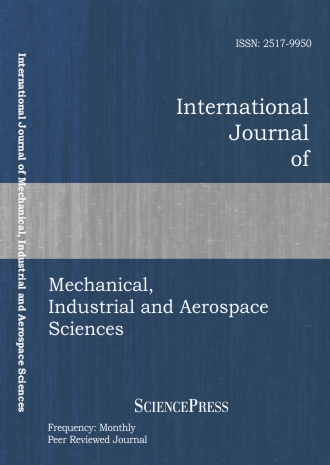
Scholarly
Volume:6, Issue: 6, 2012 Page No: 1060 - 1063
International Journal of Mechanical, Industrial and Aerospace Sciences
ISSN: 2517-9950
1086 Downloads
Additional Considerations on a Sequential Life Testing Approach using a Weibull Model
In this paper we will develop further the sequential life test approach presented in a previous article by [1] using an underlying two parameter Weibull sampling distribution. The minimum life will be considered equal to zero. We will again provide rules for making one of the three possible decisions as each observation becomes available; that is: accept the null hypothesis H0; reject the null hypothesis H0; or obtain additional information by making another observation. The product being analyzed is a new type of a low alloy-high strength steel product. To estimate the shape and the scale parameters of the underlying Weibull model we will use a maximum likelihood approach for censored failure data. A new example will further develop the proposed sequential life testing approach.
Authors:
References:
[1] D. I. De Souza, D. R. Fonseca and D. Kipper, "Appling Eyring-s